In 1921, Ada Blackjack was the only woman to participate in Vilhjalmur Stefansson's expedition to the Arctic Ocean; she will also be the only survivor, resisting for months alone on Wrangel Island in extreme conditions.
A young abandoned mother
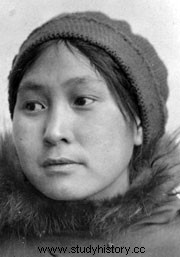
Ada Deletuk was born in 1898 in Solomon, Alaska, beyond the Arctic Circle. She is a member of the Iñupiat people, an indigenous people of the west coast and northern Alaska, whose name means "real person". The Iñupiat are a people of hunters, feeding, depending on the region, on fish, walrus, seal, whale, caribou or even polar bears. However, Ada does not learn the techniques of hunting and survival in the wild; she was raised by missionaries who taught her English, made her study the Bible and taught her how to keep a house, to sew, to cook according to Western methods. Alaska, colonized by Russian trappers since the end of the 18 th century, was in fact taken over by the United States in 1867.
At age eight, Ada moved to the town of Nome, near the western tip of Alaska. At sixteen, she married a hunter and dog team driver, Jack Blackjack. The marriage is brief and probably not very happy; the couple have three children, two of whom die in infancy, before Jack abandons Ada and their son Bennett on the Seward Peninsula. The mother and child, who was then only five years old and suffered from tuberculosis, had to walk the 64 kilometers to Nome; when Bennett is too tired to keep going, Ada has to carry him.
The divorce leaves Ada without resources to take care of her son, whose health remains poor. While waiting to secure enough income to care for him, she resolves to leave Bennett at a local orphanage, and sets off in search of opportunities.
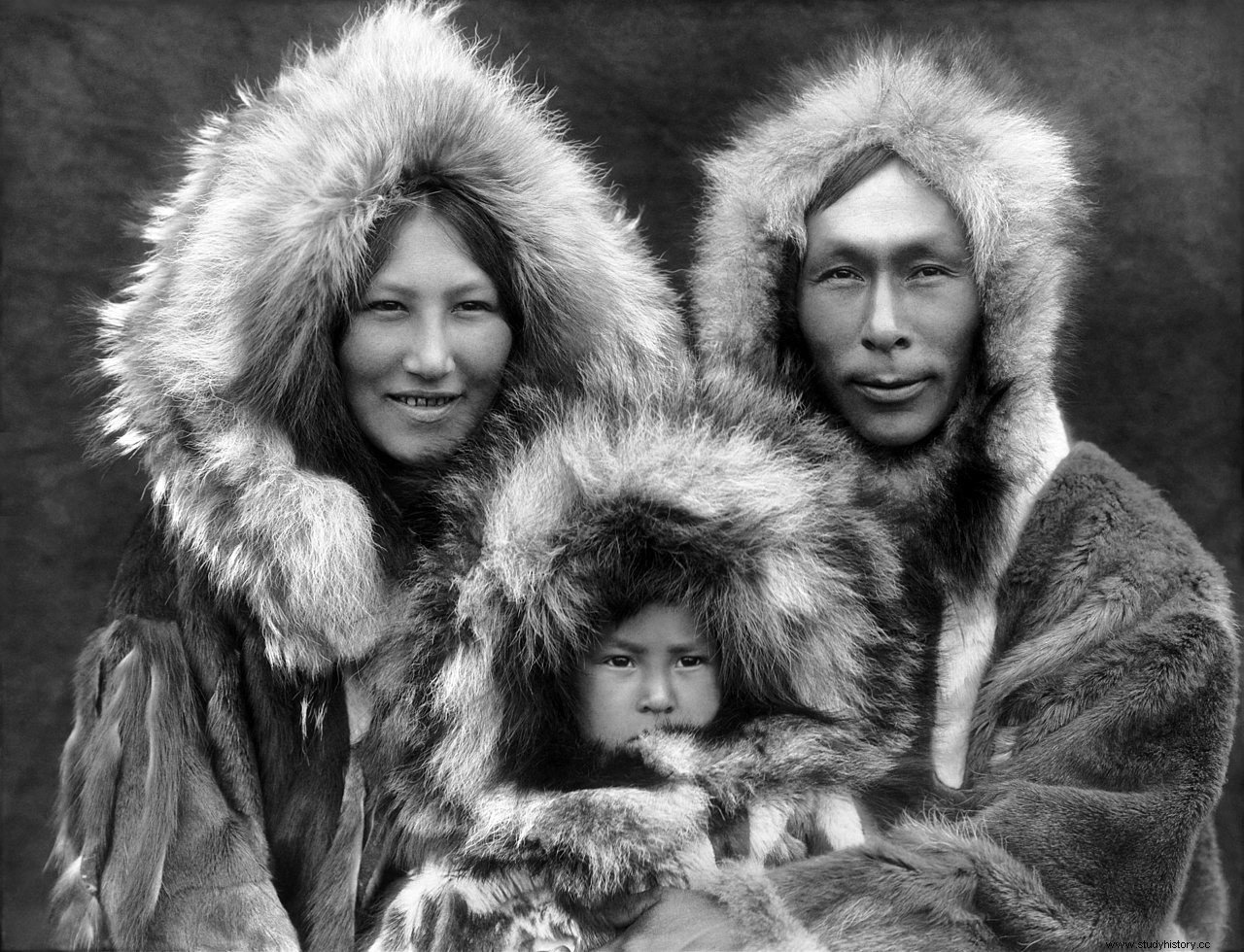
Vilhjalmur Stefansson's expedition
In 1921, Canadian ethnologist and Arctic explorer Vilhjalmur Stefansson organized an expedition to Wrangel Island, an island officially discovered in 1867, located in the Arctic Ocean 143 km from the Siberian coast, and which he intended to claim for the British Empire. The team is made up of four young explorers:Allan Crawford, 20, Lorne Knight and Fred Maurer, 28, and Milton Galle, 19. To complete the expedition, Vilhjalmur Stefansson seeks an indigenous seamstress who speaks English; for a trip beyond the arctic circle, in extreme temperatures, being able to repair furs, coats, jackets, balaclavas, is indeed crucial. Ada, who then had no knowledge of hunting or survival, was hired.
Stefansson finances and organizes but does not join the expedition. The crew that sets off on September 9, 1921 is young and inexperienced; the plan calls for the explorers to be dropped off on the island and picked up by ship the following year. But the team takes only six months of supplies, relying on the ocean and the island to meet their needs. The conditions of the expedition make Ada hesitate, especially when she discovers that she will be the only native on the team, but the promised salary represents in her eyes an incredible sum and a unique chance to recover her son. Despite her doubts, she embarks with Allan Crawford, Lorne Knight, Fred Maurer and Milton Galle.
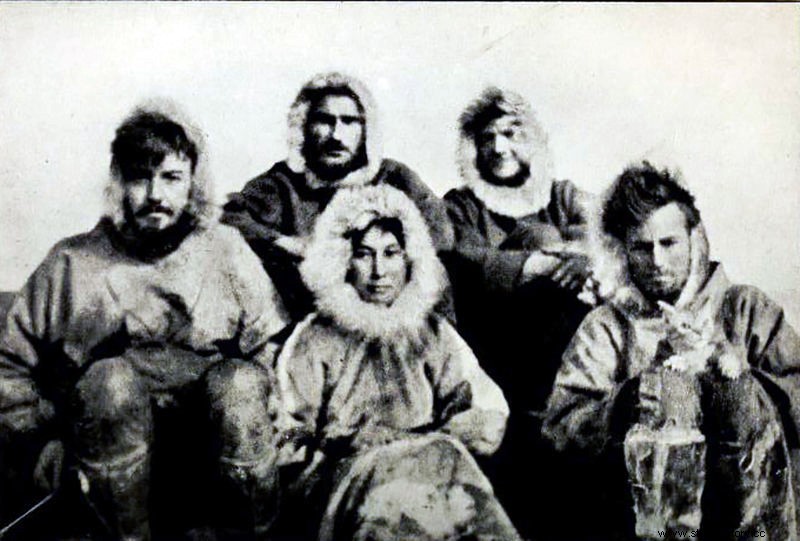
The end of summer
The journey to the island goes without a hitch. But upon arrival, the crew members discover a much larger and barren Wrangel Island than they had suspected. “I thought at first that I would turn back,” notes Ada in her diary “but I decided it wouldn’t be fair to the boys.” (At first I thought about turning back, but decided it wouldn't be just for the boys). The first months go well, but the end of summer signals the disappearance of the game and, above all, the return of the ice. The pack ice closes around the island, preventing the Teddy Bear , the ship supposed to pick up the explorers after a year, to approach. The crew then realizes that they will have to hold out for another year, with temperatures of -25°C on average during the day, with provisions already running out.
At the beginning of 1923, the situation became critical. The explorers are starving, and Lorne Knight, suffering from scurvy, is bedridden. While Ada stays by the patient's side to treat him, the three other men then decide to set off for Siberia, through the ice floe, in the hope of finding help there.
They will never arrive at their destination.
Survivor
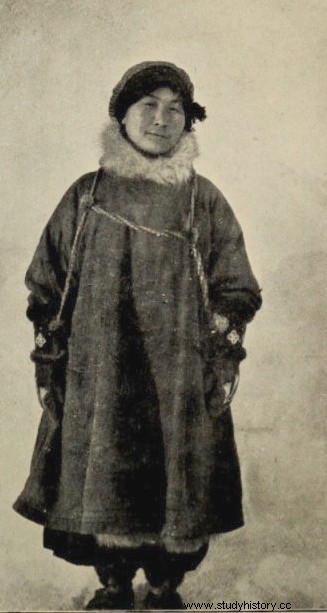
For six months, Ada remains alone with Lorne Knight whom she tries to care for. She plays the role of doctor, cook, but also hunter, woodcutter. Hard work that does not attract the recognition of his companion in misfortune, on the contrary. Lorne Knight, no doubt suffering from the impotence to which the disease reduces him, never ceases to invective him and reproach him for taking bad care of him. He goes so far as to tell her that her husband was right to abandon her, and that it is not surprising that two of her children died. Ada notes in this journal:“He never stop and think how much its hard for women to take four mans place, to wood work and to hund for something to eat for him and do waiting to his bed and take the shiad [ shit] out for him.” (he never stops to think of how difficult it is for a woman to replace four men, to take care of the wood, to chase him something to eat, to take care of his bed and to take the shit out).
Despite Knight's accusations, Ada, forced to learn hunting and survival, manages to keep him alive for six months. The man eventually died in June 1923. Ada notes:“The daid of Mr. Knights death:He died on June 23rd. I dont know what time he died though. Anyway I write the daid. Just to let Mr Steffansom know what month he
died and what daid of the month. » (The day Mr. Knight died. He died on the 23rd of June. I don't know on what, but I note the day. So that Mr. Stefansson will know what month he died, and what day of that month. )
After the death of Knight, alone - except for the company of Vic, the cat of the expedition - Ada clings to the hope of seeing her son again so as not to sink into despair. Not having the possibility of burying the body of her companion, she erects a barricade to protect him from wild beasts. She strengthens her tent, sets traps, practices bird hunting. Ada builds a platform above her shelter to be able to watch for polar bears, and even manages to replace the expedition's boat, destroyed during a storm:she builds one from driftwood, canvas and animal skins. She realizes, alone, more sophisticated installations than what the expedition had realized until then.
After three months of solitude and nearly two years on Wrangel Island, the schooner Donaldson picks up Ada, the sole survivor of the expedition. The crew will note that she was doing so well that she probably could have stayed another year on the island.
“The female Robinson Crusoe”
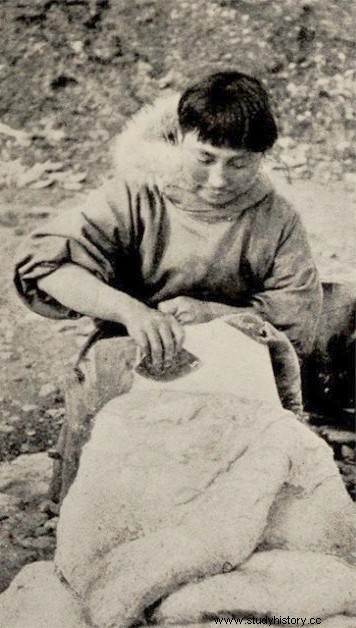
News of the tragedy caught the attention of the press, who dubbed Ada Blackjack "the female Robinson Crusoe." The young survivor receives this admiration with modesty, repeating that she was simply a mother seeking to find her son. What she will do:thanks to her pay – lower than what she had been promised – Ada can take her son to a hospital in Seattle to treat his tuberculosis. Later, she will have a second son and will return to live in Alaska.
Ada only receives her salary, and a little money on furs that she resells, but nothing on the many articles and books published later on her ordeal. Expedition organizer Vilhjalmur Stefansson self-publishes The adventure of Wrangel Island , calling Ada's story "the most romantic in Arctic history." Ada ends her life in destitution, regularly the victim of defamation campaigns and accusations of having let Lorne Knight die. She died in May 1983, at the age of 85.
